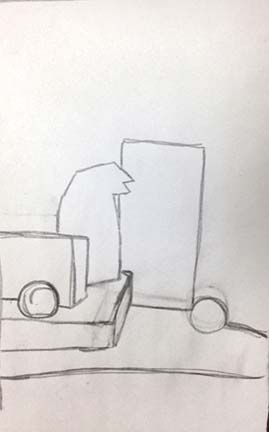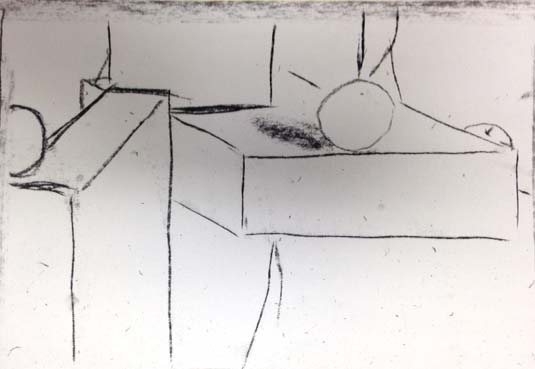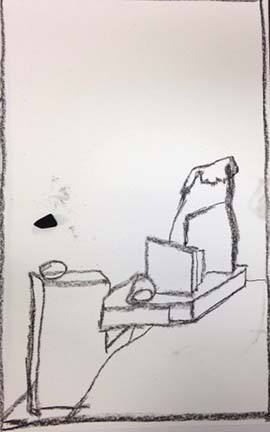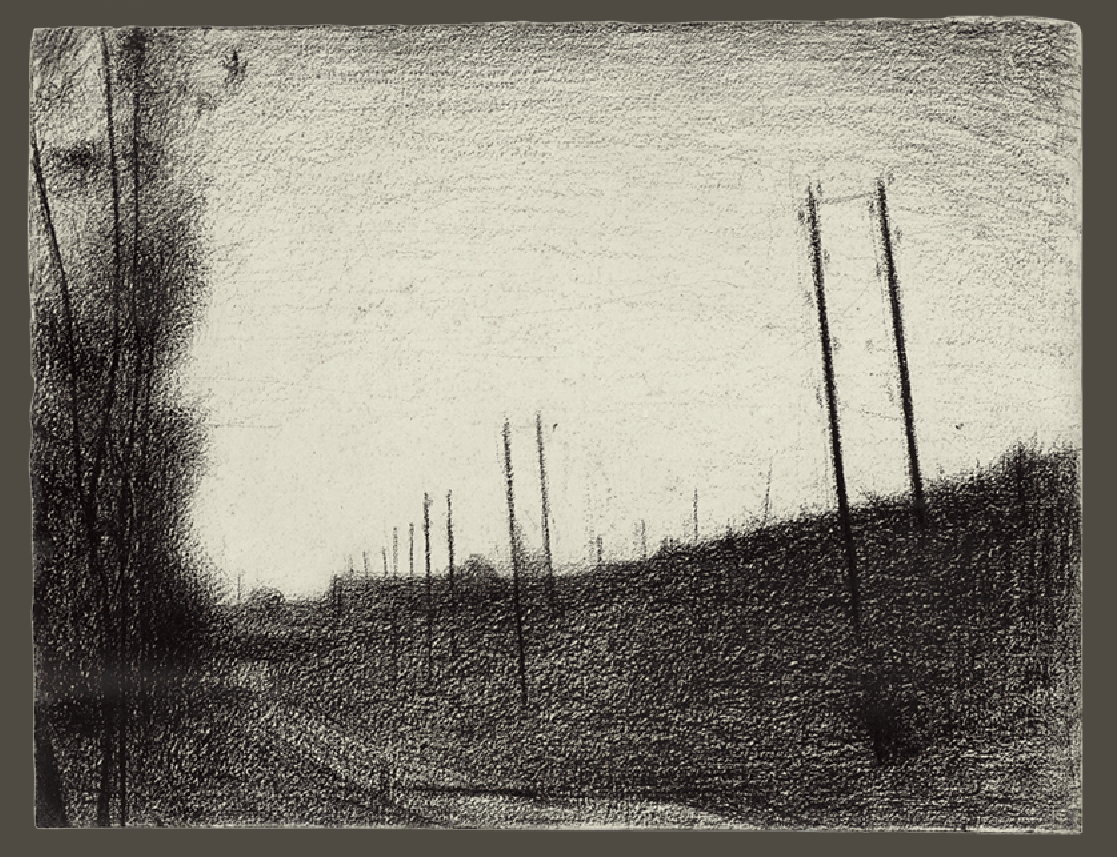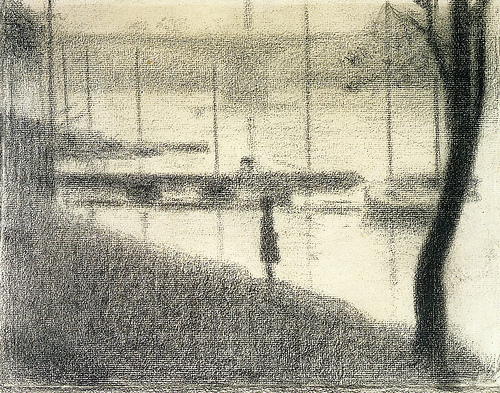This image is from a study performed by Alfred L. Yarbus in 1967 showing a pattern of eye movement as the viewer gained information looking at the painting above.
"Records of eye movements show that the observer's attention is usually held only by certain elements of the picture.... Eye movement reflects the human thought processes; so the observer's thought may be followed to some extent from records of eye movement (the thought accompanying the examination of the particular object). It is easy to determine from these records which elements attract the observer's eye (and, consequently, his thought), in what order, and how often." Yarbus
A LESSON IN -- Composition
Students warmed up thinking about mark-making, how one mark (such as a chatty line or soft smuggy squiggle) is affected by changes in material, size, or direction. Taking the same mark, they built a five value scale by layering one mark over another, changing pressure on materials, or erasing.
The lesson was about leading the eye. The still life was designed for its repetitive shapes and edges, an odd number of tall brown boxes, three small oranges and one white paper bag. Student's described what they saw by drawing four compositional drawings. With the help of a viewfinder, student's looked at the edged of objects as a way to direct, point, or guide the eye into and across the page. We talked about being a good host(ess)-- inviting and encouraging the viewer to "come on in", explore and linger. The longer a viewer "stays" increase the chance that a viewer will pick up on your visual message. A good host does not invite a guest in just to lead them right out the back door onto the street again! Too often we are not careful enough about our composition, our lines and shapes direct the viewer's attention right off the picture plane.
Below are drawings showing how student's observed the still life and thought about relationships they saw in terms of directional lines. After looking at examples of master artist's and discussing the compositions as a group, student's had 30 minutes to complete a final drawing using the five value scale made earlier.
Examples of compositions showing linear framework for final drawings
A selection of drawings
from my Wednesday class
ARTIST'S WHO THRILL ME
In class we looked at the work of Edvard Munch and Georges Seurat (above). We discusses how shapes and edges attract our eye and the path of our gaze. It was fascinating to learn how different people saw the same art, what drew their attention first, or how their eye moved along edges of shapes-- drawing their attention deeper into the picture. In the Munch drawing, some people saw the figures profile first, others saw the reflection of the window on the floor. What do you see?
Edvard Munch

